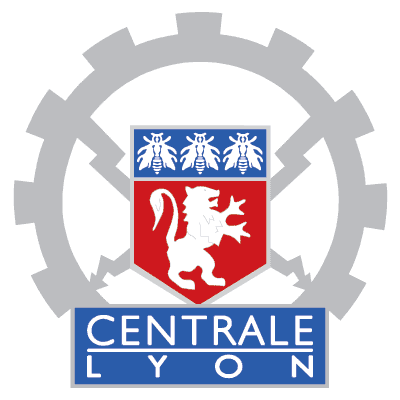
The Laboratoire de Mécanique de Fluides et d'Acoustique (LMFA) is a JRU (Joint Research Unit) and its legal representative are Ecole Centrale de Lyon (ECL), Centre National de la Recherche Scientifique (CNRS), Université Claude Bernard Lyon 1 (UCBL) and Institut National des Sciences Appliquées de Lyon (INSA). All the scientific work will be carried out in the LMFA laboratory in ECL but the costs of the project will be supported by the members of the JRU and Centrale Lyon Innovation (CLI, the subsidiary of ECL), as CLI will assure the financial management on behalf of the JRU. The acoustic department of LMFA is almost entirely specialised in aeroacoustics: its 25 staff are active in many topics, including jet flows, rotating blade aeroacoustics, duct acoustics, long range & sonic boom propagation, active control and flow-structure interactions. Thanks to a quite unique university suband supersonic anechoic wind tunnel, the acoustic department has a long experience in aeroacoustic measurements. In the past decade it developed an outstanding know-how in the most advanced CAA techniques, including full CAA and hyprid approaches. ECL has been involved for many years in National and European programs about Turbomachinery Noise: in Resound, ECL conducted an experiment on a small scale free field cascade that led to improved self-noise models. In TurboNoiseCFD, ECL led all the broadband noise efforts. In particular, ECL has proven the feasibility to predict accurately both tonal and broadband noise sources in complex geometries with appropriate Unsteady RANS or LES techniques. Numerical efforts were supported by accompanying experimentalinvestigations. ECL also participates in the PROBAND project, developing new semi-analytical and numerical methods for broadband noise generation of single sources such as self-noise and fan-tip leakage-flow noise. Third party (other than subcontractor; Identification of a third party making its resources available to a beneficiary; according FP7 financial guide page 33 - Special cases: 1) Foundations, spin-off companies, etc., created in order to manage the administrative tasks of the beneficiary) A specific third party is linked to ECL: its subsidiary 'Centrale Lyon Innovation' which will assure the financial management on behalf the JRU (PIC: 998019033). ECL has signed in March 2007 a framework agreement with CLI (Centrale Lyon Innovation S.A.). CLI will make available its resources to ECL (the "beneficiary" of the ECGA) for the financial management of the grant agreement with the Commission (ECGA). All the costs supported by CLI will be recorded in the CLI accounts and charged by ECL in its Form C. The framework agreement between ECL and CLI is not specific to the ECOQUEST project, and the costs are reimbursed to CLI either directly by the beneficiary (ECL) or by the coordinator on behalf of the beneficiary. These costs will therefore not be considered as receipts.
Specific skills for ECOQUEST
ECL has a many-years experience in aerodynamic source modelling of subsonically rotating blades using analytical, fast-running techniques, for both broadband noise and tonal noise. This includes trailing-edge noise and turbulence-interaction noise. More recently ECL developed specific analytical or semi-analytical tools to investigate the near-field radiation of rotating sources and their diffraction by scattering edges. Furthermore, the experimental set-ups available at ECL, including two anechoic wind tunnels, have been systematically used to settle data bases for the validation of prediction models. ECL has been involved for many years in National and European programs about Turbomachinery Noise such as RESOUND, TurboNoiseCFD, PROBAND. In PROBAND ECL was also deeply involved into management as a work package leader.
Key personal:
Prof. M. Roger: Professor, teaching general Aeroacoustics. Main research activity on Aero-acoustics of Moving Surfaces, 20 years experience. Basic experiments on source characterisation in airfoil and rotating blade aeroacoustics, development of analytical models for sound generation and propagation. Applications in low-speed fan noise modelling, including broadband and discrete-frequency, sound propagation and diffraction in finite-length ducts, turbomachinery aeroacoustics. Prof. Roger will supervise the work which will partly be carried out by a new PhD student recruited for the project.
Expected outcome/exploitable results and ’action plan' to get results in use
ECL expects advances in aerodynamic source models of rotating fan blades using analytical techniques, validated by the means of new data bases created within ECOQUEST. The models are subsequently implemented into a near-commercial computer code by the consortium member LMS. Also, ECL expects progress in far field sound prediction methodologies for locomotives though a precise measurement of sound fields in an acoustically perfect environment. The far field sound prediction methods for locomotives is a demand by the industrial partners VAL, VTLT and VTA. Being a research institution publication and peer reviewing is a further action by ECL to get theories developed in use.


